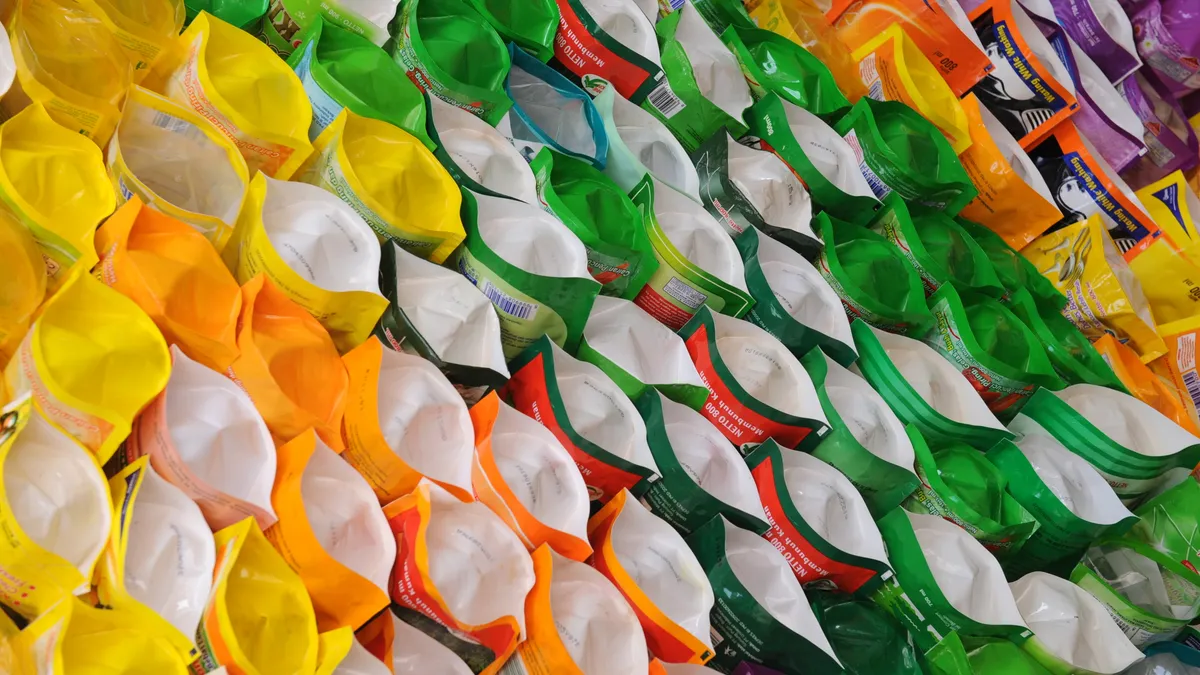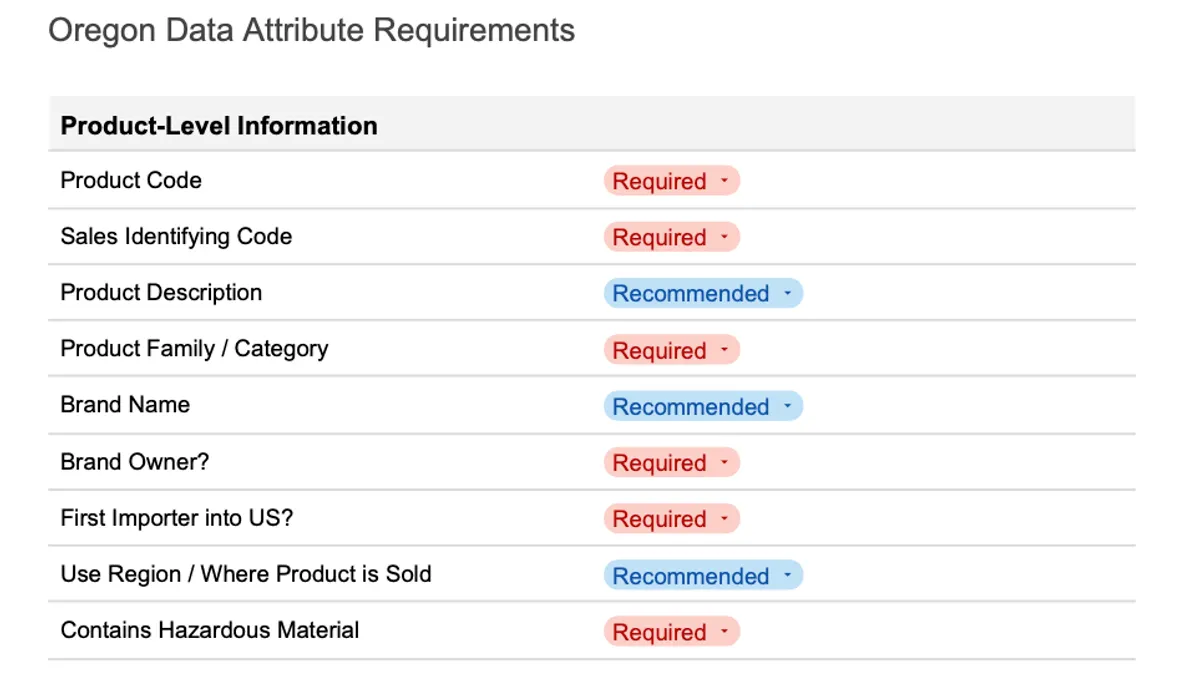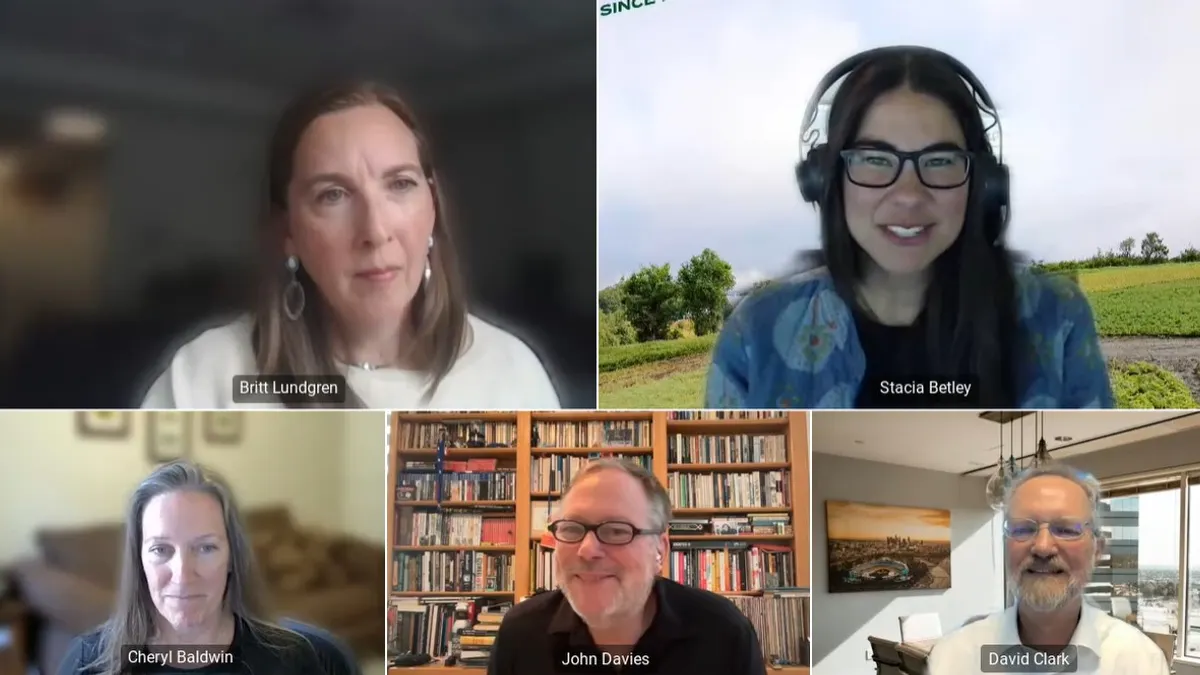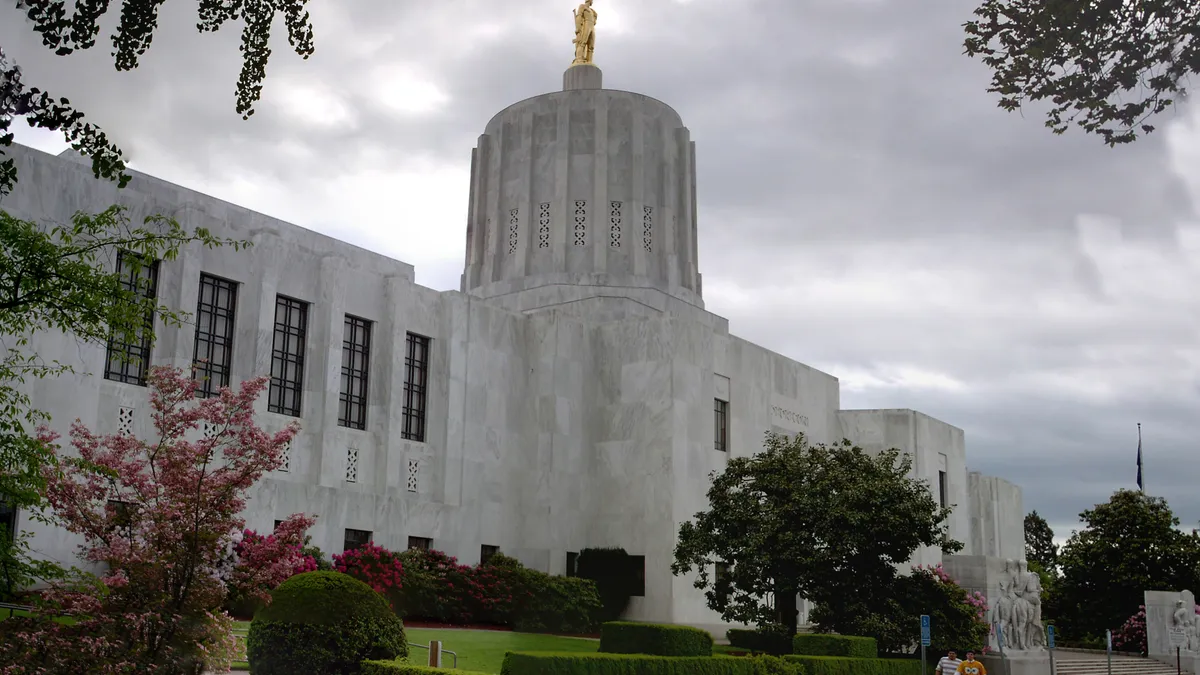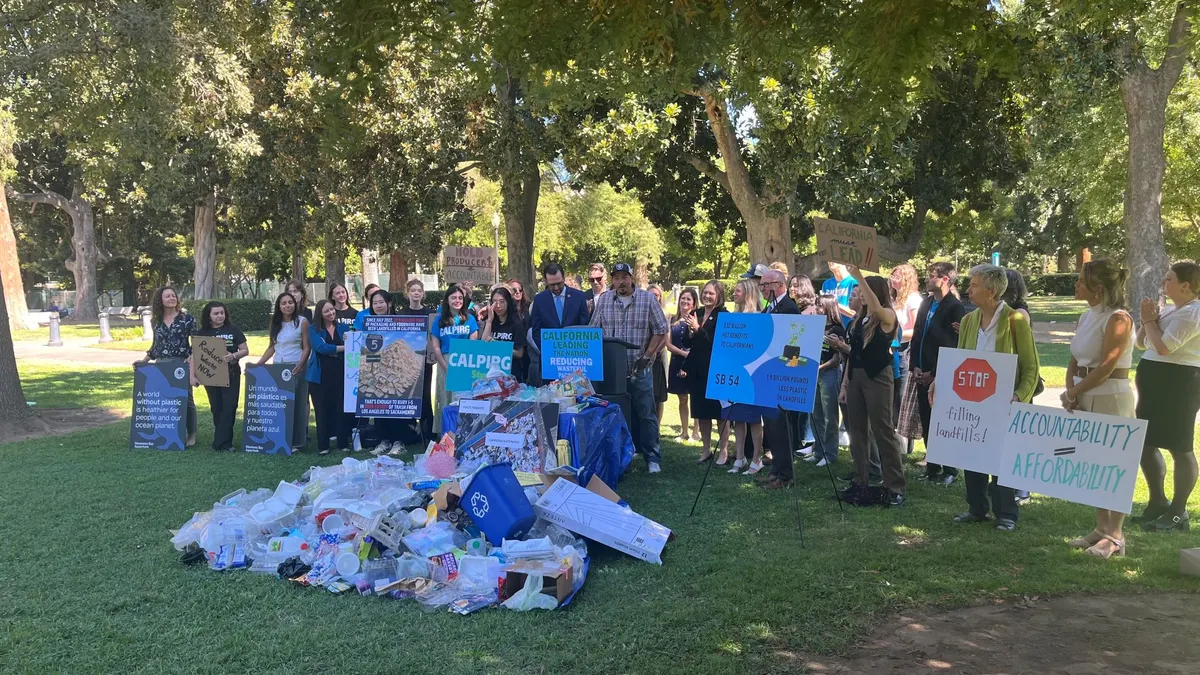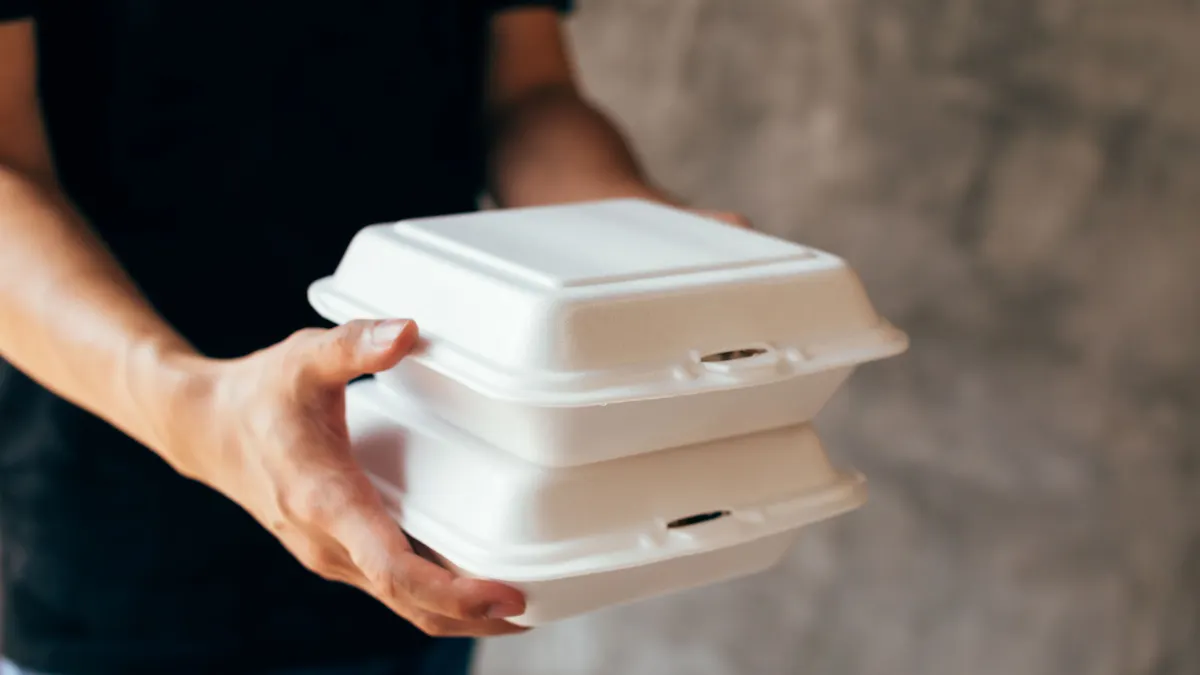Over the past year, GreenBlue — the organization behind the Sustainable Packaging Coalition — honed its approach to “strategic partnerships” to better align efforts with related groups in a fast-moving policy environment. A new scannable labeling pilot with The Recycling Partnership is the latest example.
GreenBlue is working on a collaboration that will see its How2Recycle labels placed alongside TRP’s scannable Recycle Check label, which was launched earlier this year. The goal is to offer locally-specific information through Recycle Check, beyond the more national guidance that underpins How2Recycle.
"The idea is that we could have a combined label that's dynamic,” said Tom Pollock, GreenBlue’s director of strategic partnerships, noting the potential to also translate what they learn from how consumers are using the searchable tool into broader changes. "So if we have more data about what's happening in recycling, in the recycling infrastructure, we can use that and share that with our partners so that we can make improvements.”
Further details about how it could work to combine these labels at scale in the future are still under discussion, in terms of any possible sharing of expenses or revenue between the groups, but the pilot is expected to ramp up shortly.
“The Recycling Partnership is committed to bringing data-backed, local recycling information to people where they live,” said Heath Nettles, senior director of marketing and communications, in a statement that noted Recycle Check aims to provide “data-driven, industry-aligned transparency” by drawing on TRP’s National Recycling Database. “The first few packages will be hitting store shelves this fall with the Recycle Check QR code alongside the How2Recycle label.”
This move is one of many being made by GreenBlue, which has seen a notable uptick in SPC membership during recent years. More members, who come from a range of CPG and packaging companies, are also asking for better collaboration with other groups working on related issues. This led GreenBlue to create the director of strategic partnerships position and renew its focus on cross-industry projects.
“We certainly had a lot of discussions and contact with our partner organizations, but we didn't really have a strategy defined,” said Pollock. “A lot of the NGOs and industry associations are doing similar things. So what if we could find a way to bring a lot of those efforts together?”
The list of initial organizations GreenBlue aims to work with was shared at the recent SPC Advance conference. It includes TRP, the Association of Plastic Recyclers, Ameripen, the U.S. Plastics Pact, CalRecycle, Closed Loop Partners, UNIDO, the Business Coalition for a Global Plastics Treaty and the Poly Coated Paper Alliance.
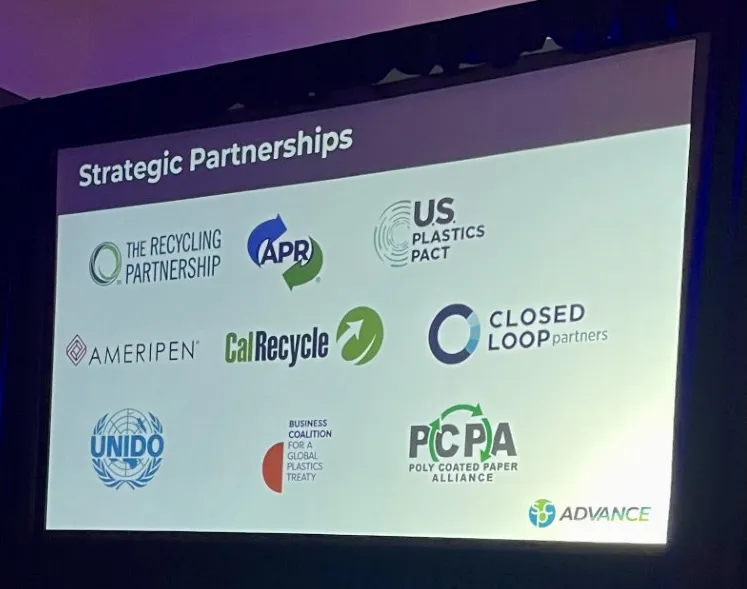
Pollock said the partnership initiative started by focusing on special projects with the first three groups — looking at areas such as consumer engagement, policy, and recycling certifications and definitions — but he anticipates more to come. A potential project with UNIDO, the United Nations Industrial Development Organization, could also lead to SPC becoming more involved in international discussions beyond its upcoming SPC Engage conference in London.
A spokesperson for CalRecycle, the only state agency on the list, said via email its relationship is currently “limited to a membership in the SPC to access resources and webinars.”
The various collaborations are considered especially important as certain states move toward implementing extended producer responsibility and recyclability labeling laws, and the Federal Trade Commission considers potential changes to the Green Guides framework for marketing claims.
The landscape around recyclability claims has grown increasingly complex since GreenBlue launched How2Recycle in 2012, coinciding with the last Green Guides updates. The program aims to provide standardized instructions on how to handle specific components of a package, such as a plastic bag for cereal versus the box it came in, and is meant to align with the Green Guides’ thresholds for widespread recycling access.
Certain environmental groups have become very critical of the program’s “store drop-off” category for plastic film in recent years, saying that the material in these bins has limited value and is often not recycled. In their view, this is a way for some of the world’s largest CPGs to mislead consumers about a product’s sustainability.
SPC plans to do research next year about the store drop-off network, including retailer participation, consumer engagement and recycling markets for plastic film. In the meantime, some retailers are also assessing this on their own. Additionally, How2Recycle is considering new research into how consumers understand and respond to the label’s various instruction categories.
"It was always meant to be a living, breathing organism that changes. We don't make policy at How2Recycle, we don't lobby. We follow policy,” said GreenBlue Executive Director Paul Nowak during a SPC Advance session. "When new policies come out that possibly change the definition of recyclable we will follow them."
Nowak said the group was pleased with the widespread adoption of How2Recycle, while recognizing it “continues to have challenges” as the space evolves quickly. Beyond any Green Guides changes, upcoming laws in California and Oregon may also soon change what can be labeled as widely recyclable in certain areas. This need for greater flexibility is part of why the Recycle Check collaboration was appealing.
Additionally, GreenBlue is refocusing efforts on its parallel How2Compost label, which draws on certifications from the Biodegradable Products Institute. SPC Director Olga Kachook said this is considered especially useful in cases where a product may need to be handled differently based on its components or use cases.
“A paper plate — it's recyclable if it's clean. Like if you put a piece of toast on it. But if it's going to be smeared with sauce and food, then it's compostable,” she said. “Making that distinction for consumers is really one of the biggest use cases for the How2Compost label."
More broadly, SPC has updated its focus to prioritize four areas — packaging design, recovery, policy and innovation — across member education and working groups. This includes revamped educational resources or position statements on various topics as well as an update to how it runs “collaboratives.” The groups, which are meant to help SPC members work together on specific topics, have largely been focused on understanding complex issues such as chemical recycling or other topics in recent years. Now, they’re each focusing on more specific issues with the goal of having solutions by next year.
"I think as an industry, we're moving beyond educating ourselves and each other about certain problems and getting on the same page and understanding new technologies,” said Kachook.
For example, current focus areas include eco-modulation in EPR structures and behavior change for reusable packaging systems, among others.
"I think a lot of companies feel stuck right now. They know what they need to do. They know the challenges, but they're in a sort of waiting period, trying to see what might change,” said Kachook. “Part of what we're trying to do next year is getting companies unstuck, moving toward some of these solutions."







